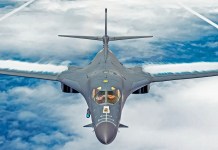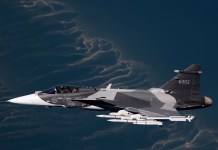The Indian Defence Ministry recently gave a green light for the much-awaited deal for the purchase of 83 Light Combat Aircraft (LCA) Mark 1A Tejas aircraft from the Hindustan Aeronautics Limited (HAL).
According to sources close to the negotiations and analysis by the EurAsian Times, the Indian Air Force (IAF) and Hindustan Aeronautics Ltd (HAL) have finally agreed on the price of the Tejas Mark 1A light combat aircraft (LCA) after months of intense negotiations.
The deal for the 83 Light Combat Aircraft (LCA) Mark 1A Tejas aircraft which was pegged at around Rs 56,500 crore earlier has been finalized now at Rs 39,000 crore.
Can ARAB NATO – The Middle East Strategic Alliance (MESA) Counter Iran?
As a result, per aircraft cost has now come down to about Rs 450 crore from an earlier cost of about Rs 680 crores. The big fall in price is a direct result of IAF cutting down on its demand list including spares, logistics support and other issues and HAL cutting down its profit of 12 per cent to a little over 6 per cent.
Now HAL is awaiting a formal signing of the contract for building 83 Tejas Mark 1A fighters. According to the agreed schedule, delivery of the Mark 1A will begin 36 months after the contract date. If the order is placed at the start of 2020, Tejas Mark IA deliveries will start in 2023.
With 16 fighters to be delivered each year, it would take another five years to deliver all 83 fighters – that is by 2028.
From Kandahar To Kashmir – Al-Qaeda’s Hints At Shifting Terror Base To J&K, India
Girish Deodhare, chief of the Aeronautical Development Agency (ADA) described Tejas Mark 1A fighter as a bridge between the current Tejas Mark 1 and the Mark 2 fighter that ADA is developing. He says the latter will be, from the standpoint of size, sophistication and capability, far superior to the Mark 1 fighter.
While the Mark 1A light fighter will have the same fuselage and General Electric (GE) F-404 engine as the Mark 1, the Mark 2 will be a significantly larger medium fighter with the more powerful GE F-414 engine.
India Endorses, Pakistan Rejects Middle-East Peace Plan Between Israel & Palestine
While the Aeronautical Development Agency is developing the Mark 2 fighter, HAL is building the Mark 1A, with ADA contributing its expertise in avionics, flight controls, aerodynamics and structural analysis.
The Mark 1A will have 43 improvements over its predecessor such “active electronic scanned array” (AESA) radar, air to air refuelling, long-range BVR missiles and advanced electronic warfare to jam enemy radars and missiles along with multi-tasking capability that would give it a clear combat edge over Pakistan’s entire fighter fleet, and most of China’s as well according to experts talking to the EurAsian Times.
Pakistan Activates Jaish-e-Mohammed Sleeper Cells For Terror Attacks On India?
Does buying HAL Tejas Mark 1A makes sense?
However, while touted as an indigenous program, many of the Tejas’ core systems are purchased from foreign suppliers including an American F404 engine – the same as that designed to power the F-20 Tigershark light fighter in the 1970s, an Israeli sensor suite and electronics, and Russian air to air missiles.
Purchasing the F404 and Israeli sensors and electronics at export prices, which are the most costly parts of the jet, the Tejas cannot be manufactured as a cheap indigenous platform as Pakistan’s JF-17, Taiwan’s Ching Kuo and Brave Eagle, China’s J-10 and JL-15 or America’s F-16.
Can ARAB NATO – The Middle East Strategic Alliance (MESA) Counter Iran?
Considering the urgent need India has to expand its fighter fleet, which will require the induction of over a dozen new squadrons in the near future, a low cost lightweight indigenous jet seems to be the answer to the country’s defence budget. The only issue with this is that India’s Tejas, largely due to its reliance on very costly foreign technologies, is very far from a low-cost fighter.




